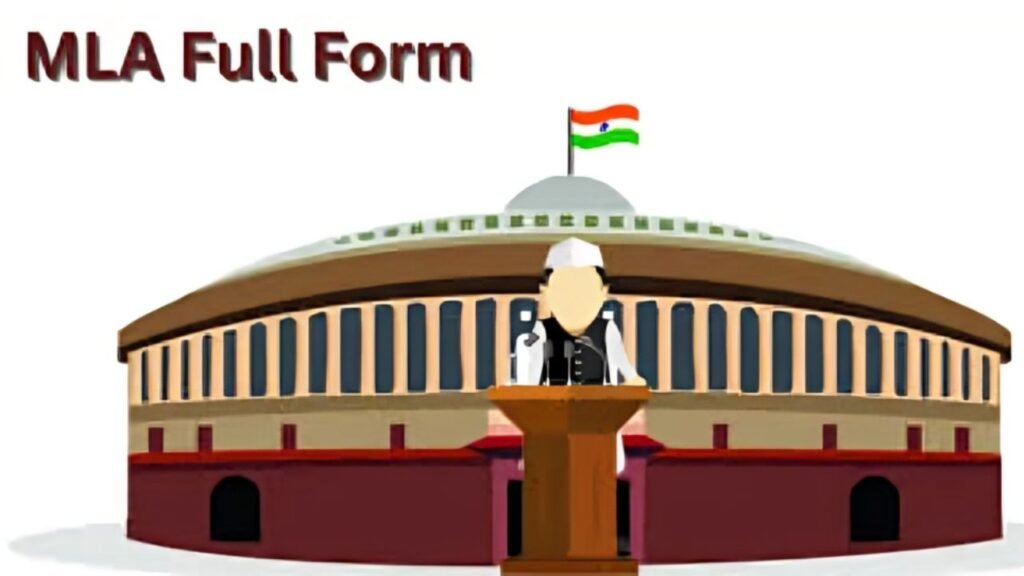Table of Contents
Roles of MLA
1. Legislator
An MLA’s primary responsibility is to carry out the duties of a legislator, which include drafting new legislation, comprehending the laws that already exist, and taking part in discussions, debates, and decisions regarding the new laws’ implementation.
2. Representative
At a meeting of elected officials, a party can function as a representative of their constituency, transmit points of view, represent the interests of the people, and promote critical thinking. The individual in this role could have obligations that include organizing and backing up the council’s choices, as well as acquiring knowledge in specialized fields of study.
Eligibility Benchmarks for an MLA
In order to become an MLA, one must meet certain qualifications:
| Eligibility Requirements | Details |
| Age Requirement | At least 25 years for Legislative Assembly. At least 30 years for Legislative council. |
| Citizenship | Must be a citizen of India |
| Position of Advantage | Cannot hold any position of advantage under the government of India or any state, except as a minister for the Indian Union. |
| Voter Registration | Must be registered as a voter in the respective state’s Legislative Assembly electoral roll. |
| Criminal Record | Not have a sentence of two years or more. Innocent of all charges Must not have received a court sentence. |
MLA Obligations
- MLA full form is Member of the Legislative Assembly members equally split their time amongst responding to constituent requests and doing Assembly duties. Whether an MLA is a Member of the Opposition, a Government Backbencher, or a Member of the Cabinet, their responsibilities vary.
- In the House, Resistance Members frequently ask and pose questions about the many sections of punditry and electorate that comprise their body. The House receives petitions, resolutions, and private member’s legislation from both government and opposition backbenchers.
- MLAs who are Ministers of the Crown (Cabinet Members) keep a careful eye on the responsibilities of their designated divisions. Bureau ministers must be appointed in order to oversee the estimates and annual reports of their areas of competence, reply to questions from the opposition, and progress government bills.
- When constituents encounter difficulties managing their division or other government departments, organizations, etc., they often turn to their MLA for support. A large amount of an MLA’s time is spent attending to constituency matters, responding to questions and concerns, and monitoring public opinion.
Authority Granted to an MLA
There is a division of powers both inside and between the state legislature. The parliament has the authority to restrict a number of functions that the legislature is unable to. Both the government and the legislature have oversight over some authorities.
| Powers | Responsibilities |
| Legislated by Both State and Parliament | Wild Animals and Birds Protection Forests Management Divorce Marriage Education |
| Primary Parliamentary Powers | Coordinating the policeDeciding on the prisonsMaking decisions for irrigationWorks for agricultureLocal government tasksPublic health issuesPilgrimage welfare and burial grounds |
Conclusion
Establishing the legal structure and responding to public needs are important tasks for a member of the legal Assembly (MLA). Legislators make sure that regional concerns are addressed at the state level by acting as both constituency representatives and law drafters. MLAs have important responsibilities, whether in the government or opposition, and have certain qualifying requirements, such as age and citizenship. They can influence policies on issues like health, education, and local government. Knowing all of an MLA’s responsibilities and authority helps one appreciate how important they are to Indian democracy.
FAQs
Q1. What are an MLA’s responsibilities?
Ans. An MLA represents the interests and grievances of the people, advances the goals of legislation, voiced regional issues, and permitted the most efficient use of the LAD budget to increase his support base.
Q2. What requisites must one fulfill in order to become an MLA?
Ans. In addition to being a resident of India, the nominee needs to be a voter from any constituency and at least 25 years old.
Read Our More Blogs: Contact g15tools com : Connect for Fast Answers & Support
